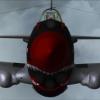
Sign in to follow this
Followers
0

Aviate, Navigate, Communicate...what is your favorite aspect of being a virtual pilot?
By
pilottj, in Hangar Chat


By
pilottj, in Hangar Chat